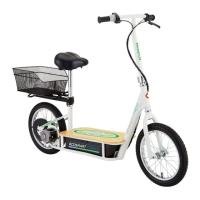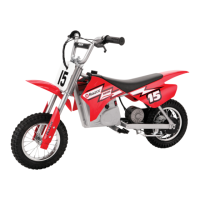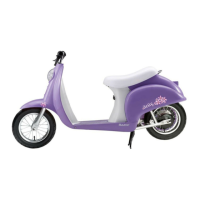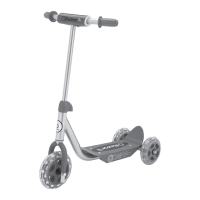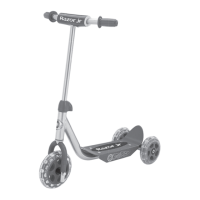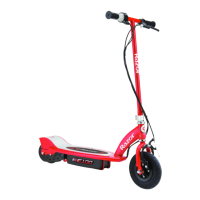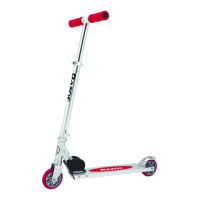PRE-RIDE CHECKLIST
USAGE
Deck and Handlebars
Check for cracks or broken connections. Although broken decks
are rare, it is possible for an aggressive rider to run into a curb
or object and wreck and bend or break the deck. Get in the
habit of inspecting your scooter on a regular basis.
Hardware/Loose Parts
Check and secure all fasteners before every ride. Make sure
the collar clamp, quick-release lever (select models only), and
handlebar spring buttons are locked properly in place before
riding. There should not be any unusual rattles or sounds from
loose parts or broken components. If the unit is damaged, do
not ride. Reference “Safety Warnings” on page 1 of this
manual.
Safety Gear
Always wear proper protective gear, such as an approved
safety helmet. Elbow pads and kneepads are recommended.
Always wear closed toe shoes (lace-up with rubber soles) and
keep shoelaces tied and out of the way of the wheels. NEVER
RIDE BAREFOOTED OR IN SANDALS.
Laws and Regulations
Always check and obey any local laws or regulations.
Be Careful!
You will see people on TV and maybe even people you know
doing tricks and stunts. These are people who have been
practicing on scooters for a very long time. Don’t try something
until you are ready. Avoid steep inclines and don’t ride too fast —
you can lose control and fall. Skateboard parks are not designed
for scooters. Never ride in traffic or on the street and watch your
surroundings for pedestrians, bikers, boarders and skaters.
Maintain a hold on the handlebars at all times.
How to Ride
Place one foot on the baseboard, push forward with the other foot. Steer with both hands on the handlebars.
For enhanced cornering, lean slightly into the direction of the turn.
How to Stop
For controlled stops, apply the brake by stepping on the rear brake. Razor recommends that you practice applying
the brake at various speeds and in an open area free from obstructions before riding your scooter around others.
5

